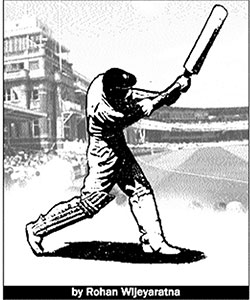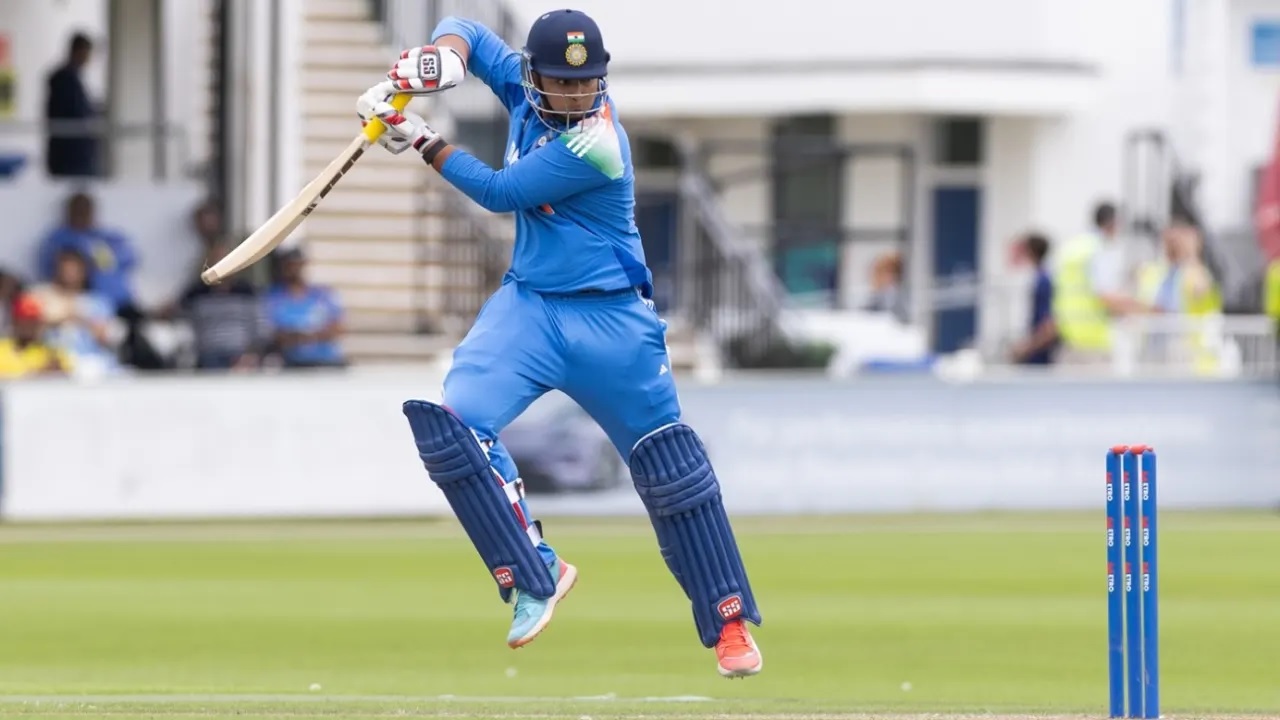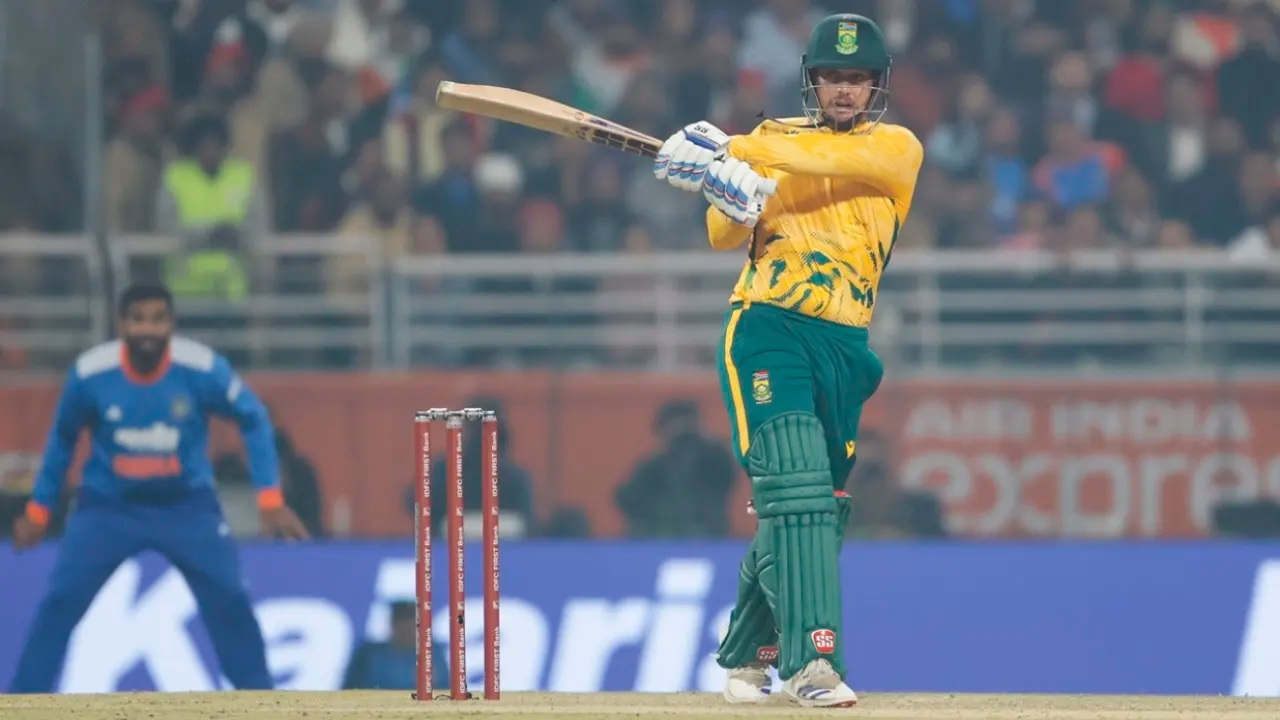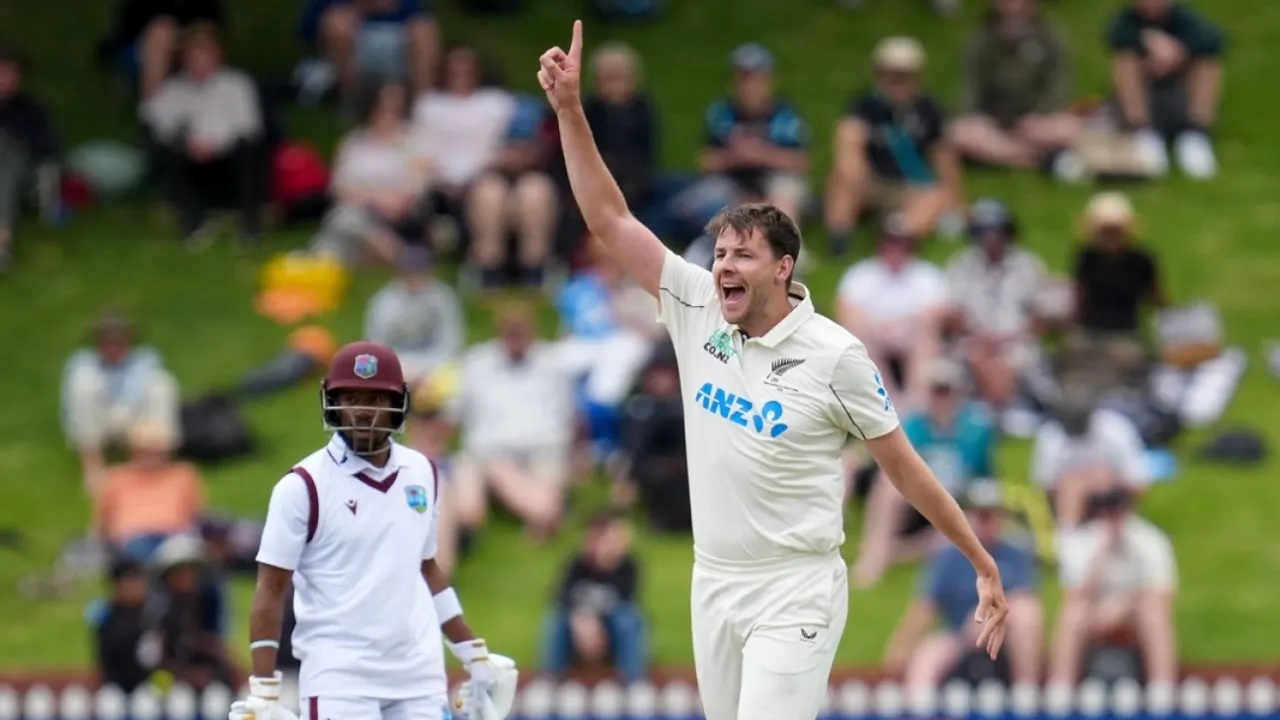Sports
More on Lorenz and Daya Sahabandu

On one of those boring lockdown days of early June, Lorenz Pereira lit up The Sunday Island with a highly entertaining piece in which he recalled what he termed as one of his most satisfying sporting achievements. That was the making of Daya Sahabandu the cricketer. Several generations have rolled by since Lorenz Pereira’s heyday in sport, and for the benefit of today’s man about town, a few paragraphs on Lorenz Pereira would not be out of place, before we begin discussing the enigma that was Daya Sahabandu.
 Eustace Lorenz Pereira was a born sport; both as a player and a person. Cricket came to him naturally. Blessed with a fine cricketing brain while still in school, he was an excellent left-hand bat, a very useful off spinner and an outstanding fielder in the gully or in the covers in particular. Given the flamboyance, the confidence and the style with which he played his sport, it was natural he became the cynosure of all eyes, be it when playing cricket or rugby football.
Eustace Lorenz Pereira was a born sport; both as a player and a person. Cricket came to him naturally. Blessed with a fine cricketing brain while still in school, he was an excellent left-hand bat, a very useful off spinner and an outstanding fielder in the gully or in the covers in particular. Given the flamboyance, the confidence and the style with which he played his sport, it was natural he became the cynosure of all eyes, be it when playing cricket or rugby football.
Arguably, the finest ……
Lorenz first played for Royal under Fitzroy Crozier in 1956. He was Michael Wille’s deputy in 1957. He went on to captain Royal in 1958 – the year in which Michael Tissera captained St. Thomas’. Lorenz also played for Royal in 1959, when the team was led by Sarath Samarasinghe. His sporting accomplishments and talents were such, many wise heads considered him as arguably, the finest sporting talent that Royal had unearthed till then.
Lorenz won Royal College colours at Cricket, Rugby, Athletics and Tennis, in addition to also winning Public Schools Athletics colours. He would have won more, had not those ancient Egyptians and horologists decided that a day should consist of only 24 hours and no more. In recognition of his outstanding contribution to sport, and given his other accomplishments and agreeable attributes, Royal College appointed him their Head Prefect in 1958. Further, in recognition of his continued outstanding achievements at cricket, he was picked the Schoolboy Cricketer of the Year in 1959.
Lorenz Pereira made his mark at rugby for Royal as a brilliant wing three quarter but did not captain his school. One of the standout features of his play was his ability to hit high speed from a near standstill position within seconds. His play was also characterized by his tendency to frequently cut in and join the threes in mesmeric overlaps, often side stepping the enemy with no discernible drop in speed. He preferred to make his advances without having to endure human contact. This he often achieved through the use of speed, dash and verve. Memorably, in the return leg of the Bradby shield in 1958 Lorenz playing on the right wing threw the ball into a line out, and from the ensuing maul the ball changed hands several times while moving down the line and across the field to the left wing, where a speeding Lorenz Pereira was at hand to collect the final pass and score a sensational try! That brilliant piece of work won Royal not only the match, but also the Bradby Shield in the dying moments of that game.
Talent without question
After leaving school Lorenz Pereira played cricket for the SSC and rugby football for the CR & FC before proceeding to Cambridge, where he didn’t play much and therefore did not win a Varsity Blue. Given his awesome talent and his natural flair, this could only have been through some lack of application on his part. In fact, if I were to hazard a guess, he may have devoted far too little time to sport for reasons best known to him; for his promise and his sporting talent were both without question.
Having obtained his degree and upon his return, Lorenz joined John Keells Tea Department and began working as a Tea Broker. Always seen with a characteristic kerchief knotted round his neck on a cricket field, he turned out for the SSC once again, before giving up the game altogether – owing possibly to waning interest. Although his cricketing skills were munificent, it was at Rugby that he shone with spectacular success.
First ‘non-white’ Captain
Lorenz Pereira was a man of great charm and winsome ways. Given his pedigree, his panache and his awesome popularity within the sporting circuit, it came as no surprise when he was conferred the then highly prestigious membership of the C.C.C., CH & FC and the Gymkhana Club as one of the first Ceylonese to be accorded that honour. That was sometime in the early 1960s. He was also the first ‘non-white’ to captain C.C.C. and CH & FC at cricket and rugby football.
Even though he never captained his school at rugby, Lorenz captained the national rugby team while playing for the CH and FC. Playing alongside the likes of Omar Sheriff, John Burrows, Mike Davies, Maurice Marrinon, Y.C. Chang and Brian Baptist (to name but a few), he became an integral part of most CH sides in the 1960s and early 1970s. He would often thrill spectators with his raking runs, his brilliant side stepping and swerving; his selling of perfect dummies while accelerating into the space created, and leaving the opposition defense reeling in his wake. Outside the paddock he developed many social skills, not the least the ability to amuse, while delivering some outstanding after dinner speeches. That was a skill he would unfurl with great finesse and timing whenever the occasion demanded. But despite all that, not many heard him say until now that he had a direct hand in making Daya Sahabandu, the cricketer he turned out to be!
The spindly Daya Sahabandu
Daya Sahabandu began his cricket career at Royal as a spindly left arm in-swing bowler. He played only a few First XI games under Michael Wille’s captaincy in 1957 before he was dropped. Relieved he was no longer under Wille’s stringent leadership, Sahabandu played for the Second XI where he tried out and acquired a great liking for spin bowling. Playing under the more relaxed regime of Lorenz Pereira in 1958, Sahabandu employed both styles of bowling and met with much success. Having played in the Royal-Thomian of 1958, 1959 and 1960, Bandu won his cricket colours in each of those years, while opening the bowling and thereafter reverting to spin.
Bandu’s chief weapon was his awesome accuracy. The trick with his bowling was that he would adjust the flight of the delivery according to the state of the wicket. For instance, if he found he could extract more spin at a certain trajectory of delivery, he would make it his stock ball. From then on, he would tie up the batsman in knots, and finally commit him into error. He developed his ‘chinaman’ and the googly later on in his career while playing club cricket, but in the main during his schooldays, he was a ‘no frills’ left arm orthodox bowler of great consistency.
‘DH’ the mentor
Daya Sahabandu played under several captains in his time but it was under D.H. de Silva that he flowered out and achieved his best. ‘DH’ mentored him and was a great influence on Bandu’s personal progress during his playing years at Nomads. But try as he might, there was one aspect over which ‘DH’ could not wield any influence whatsoever over Bandu. That was the aspect of fielding – but more on that later.
To this day, Bandu considers ‘DH’ as the finest captain he played under. ‘DH’ was the Brian Close of Sri Lanka cricket. He was aggressive, up front and in your face. Not the most popular or best liked among those who knew him purely as an opponent, ‘DH’ carried a lot of cricket between his ears. Cricket to him was a thinking man’s game, and he lived his life for the sport – playing, thinking, analysing. He and Bandu were like peas in a pod; one doing the plotting and the other doing the executing. Having unerringly analysed each opposing player, ‘DH’ would – either from first slip or any bat-pad position – surreptitiously direct Bandu where he should be pitching next. Sometimes Bandu would open the bowling for Nomads and bowl quickish left arm orthodox. He had the ability to make some balls pop up more than others, and this kept the bat-pad fielders always interested. Even when well into his 40s, ‘DH’ would position himself at silly point or forward short leg and employ several others in brazenly attacking positions close to the bat, only because he had such an unshaken belief in Sahabandu’s unerring accuracy.
Often punching above their weight ….
In short, Bandu could pitch the ball on a 50 cent piece if he so wished. Once he had discovered the best trajectory to bowl, he was like a wound-up clockwork; faithfully trudging back to his bowling mark, turning and running in, and landing the leather exactly where his skipper wanted it, time after time. He repeated this routine like a mantra, never allowing himself to be flustered by any outside influence or distraction. If ‘DH’ was the Sri Lankan equivalent of Brian Close, Sahabandu was to Ceylon, what Underwood was to England. DH and Bandu were brilliant – even eccentric, and for sure, crankily cricket mad! If the wicket took spin or suggested the slightest trace of dampness, Sahabandu – be it with spin or seam – was near unplayable. It was grippingly entertaining spectacle, watching Nomads often punch above their weight and getting the better of more fancied teams with their tight cricket and cunning!
Could no longer be ignored ….
Bandu played his cricket at a time when athleticism and fielding excellence weren’t the most sought after attributes in players, when it came to selection. Despite that concession, it was generally agreed that Bandu ‘s ideal fielding position should be the remotest possible in the field, since placing him behind the sightscreen was not an option. Although his fielding skills remained static over the years, his skills with the ball continued to improve, particularly with the advent of Stanley Jayasinghe to Nomads in 1968 or thereabouts. Teaming up with D.H., Stanley helped Sahabandu raise his game by several notches, until it was no longer possible to ignore him for national service.
And so despite his near magical ability with the ball, It took Bandu all of two months short of 29th years to play his first match for Ceylon. That was in January 1969 when he represented the country in a 60 over game against a powerful MCC team. Not unsurprisingly Bandu returned the best bowling figures, capturing 3 for 35 off his allotted 12 overs against the likes of Edrich, Fletcher, Graveney, Cowdrey and D’Oliveira. Playing for Ceylon in the three day game which followed, Sahabandu again returned the best bowling figures for the Ceylonese, capturing 2 for 90 in 44.2 overs. His two scalps were the prized wickets of Tom Graveney and Keith Fletcher.
Next followed Ian Chappell’s Australians in Ceylon in 1970 (27-12-64-2 and 22-6-52-2), England in Ceylon in 1970 (23-12-33-1 and 37-15-86-5) and England in Sri Lanka in 1973 (16-5-42-0 and 14-4-24-0). Daya Sahabandu played his last game for his country in November 1975 while touring India.
A masterpiece in stonewalling ….
Of the three “Tests” that were played on that Indian tour of 1975, it was with the bat that Bandu grabbed the greatest attention. In the first “Test” at Hyderabad (Nov 8th – 11th) Bandu held up the Indian juggernaut of Madan Lal, Amarnath, Bedi, Chandrasekhar and Prasanna, by batting till after tea on the final day and stalling what might have been a galloping innings defeat for his side. Going in as night watchman in the Sri Lankan 2nd innings the night before, Sahabandu held his end up for four hours and 16 minutes on the final day, with a rare exhibition of ‘stroke-less batting’. His marathon effort might not have been enough to save the game for his side, but it certainly went a long way towards helping Sri Lanka avoid the ignominy of an innings defeat, while prolonging the inevitable till the 2nd last over of the final day. His final representative game was the 3rd Test at Nagpur on 28th, 29th, 30th November, and 1st December 1975.
If Daya Sahabandu with the ball in hand was unquestionably a champion, his repute as a fieldsman as mentioned before, was nothing short of withering. Lorenz describes him as a total liability in the field, stating that if he were placed at wide third man at the start of an over, he would meander with no particular aim or direction, until he ended up at fine leg by the time the over ended! In short, Lorenz found that Bandu needed supervision and his fielding position set, not just once every over, but before each ball! Bandu’s legendary habit of loitering whilst being engrossed in a world of his own continued unabated throughout his playing career, much to the chagrin of many of his captains.
Bandu, the incomparable!
But perhaps the final word must remain with Mike Wille, captain of Royal in 1957 who is credited with this story. Royal were getting smashed at the hands of St Benedict’s when Neville Casiechetty ‘s scorching hit off a Bandu delivery was brilliantly caught at cover. As luck would have it the ball was deemed a ‘No ball’. On noticing the batsman at the non-striker’s end was yards out of his crease and having no chance of a safe return whatsoever, the fielder gently lobbed the ball back to Sahabandu, who had only to remove the bails to effect what would have been a run out by yards!
What Bandu did next must surely go down in the annals of cricket’s rich folklore, passed down the generations. Catching the ball that was gently lobbed back at him, Bandu turned, and with bowed head, simply walked back to his bowling mark, contemplating the infinite!
It must have been Mike Wille’s fitness and his youth, which saved him from suffering a midfield heart attack!
Latest News
Vaibhav Suryavanshi slams 95-ball 171 in Under-19 Asia Cup opener

Vaibhav Suryavanshi slammed a blistering 95 ball 171 in the Under 19 Asia Cup opener against UAE on Friday. He fell just six short of Ambati Rayudu’s long-standing India record in youth one-dayers – the 177 against England in Taunton back in 2002.
Suryavanshi, yet to turn 15, hit nine fours and 14 sixes during his innings, before being bowled attempting a paddle in the 33rd over of India’s innings. They eventually finished with 433 for 6 after being put in to bat.
Last month, Suryavanshi had smashed a 42-ball 144 – the joint third fastest century by an Indian in men’s T20s – against UAE at the Rising Stars Asia Cup in Doha. He had got to his century off 32 deliveries that day, in the process recording the joint-sixth-fastest century in all men’s T20s.
Suryavanshi – a certainty to feature in next month’s Under19 World Cup in Namibia and Zimbabwe – also recently slammed an unbeaten 61 ball 108 at the Syed Mushtaq Ali Trophy to become the youngest century-maker in the tournament’s history.
He had a breakthrough year in 2025, when he became the youngest to slam an IPL century, for Rajasthan Royals [101 off 38 balls] against Gujarat Titans. Having made history just a few months earlier – by becoming the youngest pick in an IPL auction at 13 – Suryavanshi featured in seven games in the 2025 edition, all as an opener. He made 252 runs at a strike rate of 206.55.
After IPL 2025, he was part of the India Under-19 squads that toured England and Australia. He smashed a 78 ball century in the first four-day fixture in Brisbane, and finished as the second-highest run-getter of the multi-day series against Australia Under-19s, scoring 133 runs in three innings as India won 2-0.
Prior to that, he had amassed 335runs at a strike rate of 174.01 in the one-dayers against England Under-19s.
[Cricinfo]
Latest News
Quinton de Kock’s 90 powers South Africa to massive win

If India defied losing the toss and getting the worst of the conditions, theoretically, in Cuttack, South Africa did the same in New Chandigarh to come roaring back into the T20I series, which is now locked 1-1 with three matches to go.
India captain Suryakumar Yadav noted at the toss that the outfield was already dewy when the players were going through their pre-match warm-ups. It was a no-brainer to chase. But Quinton de Kock put India under pressure with a 46-ball 90 studded with seven sixes, and Donovan Fererrira finished brilliantly with an unbeaten 16-ball 30, taking South Africa to an imposing total of 213 for 4.
Imposing, but not dew-proof; certainly not given how India’s bowlers had struggled with the conditions and bowled 15 wides — including seven in one Arshdeep Singh over — and 13 full-tosses.
But the dew never got a chance to test South Africa, as their new-ball bowlers made the best possible use of early movement to take three wickets in the first four overs. These included the Test-match-style dismissals of both India openers.
It was all steeply uphill from 32 for 3, and India never really challenged the visitors, with Tilak Varma’s 34-ball 62 standing out for its fluency and enterprise on a difficult night for his team. South Africa bowled India out with five balls still remaining, with Ottneill Baartman hastening their end with three wickets in the 19th over.
This pitch wasn’t a complete featherbed, with the ball occasionally stopping on the batters and making them mistime shots. Two members of South Africa’s top three, Reeza Hendricks and Aiden Markram, scored 37 off 36 balls between them.
The other member, however, was in an entirely different mood, taking full toll of anything remotely too short, too full, or especially too straight. De Kock kept clearing the ropes whenever he had half a chance, particularly with his pulls and pick-up shots square and behind square on the leg side.
This put India’s bowlers under tremendous pressure. They couldn’t attack de Kock’s stumps, because that ran the risk of being whisked over the leg side, and they couldn’t afford to give him width either. This pressure led India to attempt yorkers and wide yorkers frequently, and the pressure combined with the dew to produce errors in the form of wides and full-tosses.
Arshdeep suffered the most from this, sending down seven wides in the 11th over — all to de Kock – and nine in all.
Jitesh Sharma’s alert run-out of de Kock — who wandered out of his crease instinctively after bottom-edging the ball towards the keeper — in the 16th over, followed by Axar Patel’s dismissal of Dewald Brevis in the 17th threatened to stall South Africa at a critical stage of their innings. But Ferreira and David Miller made sure they cleared 200 by a good margin, putting on an unbroken 53 off 23 balls for the fifth wicket.
The highlight of the partnership was an 18-run final over during which Ferreira hit Jasprit Bumrah for two sixes: a full-toss drilled straight, and a good short ball that followed the batter’s premeditated movement pulled authoritatively over the leg side.
In all, Bumrah conceded four sixes, the most he has gone for in a T20I.
Given all the dew around, it was imperative that South Africa made the new ball count. They did that emphatically. Ngidi set things in motion with a first-over jaffa to Shubman Gill, squaring him up in defence with one that straightened from a good length and having him caught at slip. Jansen followed up in the next over with the mirror-image dismissal of Abhishek Sharma; angling in, straightening, squaring up the batter and catching the outside edge.
Abhishek’s wicket was particularly crucial, since he’d already hit two sixes, in just eight balls.
Suryakumar followed the openers to the dressing room in the fourth over, sending a thin edge to the keeper — confirmed after South Africa reviewed the not-out decision — while looking to steer Jansen behind point.
India never threatened to make a match of it, particularly with Axar Patel — promoted to No. 3 — and Hardik Pandya struggling for fluency, scoring 41 off 44 balls between them.
But there was one bright spot for the home team in the form of Tilak, who looked in excellent rhythm right from the time he walked in, and combined that with his awareness of the field to find the boundary frequently even while his partners got stuck. Against Ferreira’s 110kph offspin rockets, for example, he made room to use the pace and steer him behind point, off the stumps. Then, against George Linde’s left-arm spin, he collapsed his back knee smartly to reverse-sweep over backward point for six. A slog-swept six off an Ngidi slower ball took him to a 27-ball half-century in the 14th over.
Jitesh, who came in at No. 7, also made good use of the V behind the wicket, scoring 27 off 17, but the result was already certain by the time he walked in, with India needing 96 off 34 balls at that point.
Brief scores:
South Africa 213 for 4 in 20 overs (Quinton de Kock 90, Aiden Markram 29, Dewald Brevis 14, Donovan Ferreira 30*, David Millerr 20*; Varun Chakrawarthy 2-29, Axar Patel 1-27 ) beat India 162 in 19.1 overs (Abhishek Sharma 17, Axar Patel 21, Tilak Varma 62, Hardik Pandya 20, Jitesh Sharma 27; Ottneil Baartman 4-24, Marco Jansen 2-25, Lungi Ngidi 2-26, Sipamla 2-46) by 51 runs
[Cricinfo]
Latest News
Duffy five-for triggers West Indies slide to give New Zealand first win of WTC cycle

Jacob Duffy, who had to wait until his 31st birthday for a Test debut earlier this year, claimed his second five-wicket haul of the series as West Indies folded tamely on the third day in Wellington. Bowled out for just 128, West Indies left New Zealand a target of 56, which was knocked off before tea for a 1-0 lead in the three-match series with one game to go. It was New Zealand’s first win of the 2025-27 World Test Championships [WTC] cycle. West Indies, meanwhile, have now lost six of their seven outings in this cycle and remain winless.
The collapse began with Brandon King’s run-out for 22 in the morning session. After a careful start with overnight partner Kaveem Hodge (35), King set off for a risky single in the morning’s eighth over. Sent back and left stranded, he was gone once substitute Michael Bracewell’s sharp throw was relayed on to the stumps by debutant wicketkeeper Mitchell Hay.
Shai Hope fell in the same over after closing the bat face in an attempt to work Michael Rae to the leg side, offering a simple return catch. Roston Chase, averaging under 16 as Test captain, then nicked a rising delivery from Duffy through to the keeper.
Hodge and first-Test hero Justin Greaves (25) attempted to stabilising things, with Hodge unfurling crisp strokes through the covers and square leg. But in the 31st over, one of those well-struck pulls picked out substitute fielder Will Young, who held a superb rebound catch at midwicket.
At 88 for 6, with the lead still below 20, the match was effectively gone, and Duffy accelerated the finish. He trapped Greaves lbw with a full delivery that jagged in, a decision first turned down but later overturned on review. In his next over, Duffy drew Tevin Imlach into a loose drive away from his body for an edge to second slip. Rae added his third by removing Jayden Seales caught behind, before Duffy completed his five-for by going short to No. 11 Ojay Shields, who miscued a leg-side swipe to fine leg.
Duffy walked off to applause with the innings ball raised, and openers Tom Latham and Devon Conway dashed away to pad up with an hour left before tea and a small target in front.
The pair added 26 in seven overs before Latham got a leading edge off Anderson Phillip to third slip. Conway held fort, attacking with six fours in his unbeaten 22-ball 28. Kane Williamson, with 16 off 12 balls, wrapped up the match with back-to-back boundaries in the tenth over.
Earlier in the Test, Blair Tickner’s first-innings four-for and Rae’s three wickets dismissed West Indies for 205. New Zealand replied with a disappointing 278 for 9 declared, with Tickner unable to bat after picking up a shoulder injury. But half-centuries from Conway (61) and Hay (60) ensured a meaningful lead, which, combined with West Indies’ limp second-innings effort, set up a comfortable win.
After the game, New Zealand captain Latham said they got “better and better” as the game progressed. “We took a little bit to get into the game, morning of day one, potentially some heavy legs. But we adjusted things and we bowled better and better in the second innings. And obviously Duffy on the back of that [five-wicket haul] and some of our substitutes coming on and getting on the board was pleasing.
“Mitch Hay played beautifully in the first innings coming under pressure. The way he played was pretty much the way he plays for Canterbury and that’s what we asked of him. And Michael Rae picked up some really important wickets on day one, trucked into the wind all week. All those efforts do not go unnoticed. We probably weren’t where we wanted to be with the bat but we can look into that over the rest of this week.”
Chase said West Indies’ batters didn’t make the most of the conditions on offer: “Batting is a bit of a concern, after coming from the first Test, that beautiful second innings [in Christchurch]. But we came here and our batters never really capitalised. Initially we thought the pitch would be similar to Christchurch. But this pitch was a lot easier for batting. The scores didn’t reflect that. There is still one Test match left and we can still level the series. That can help motivate the guys further.”
The third Test begins on December 18 in Mount Maunganui.
Brief scores:
New Zealand 278 for 9 dec (Mitchell Hay 61, Devon Conway 60; Anderson Phillip 3-70, Kemar Roach 2-43) and 57 for 1 (Devon Conway 28*, Kane Williamson 16*; Anderson Phillip 1-17) beat West Indies 205 (Shai Hope 47, John Campbell 44; Blair Tickner 4-32, Michael Ray 3-66) and 128 (Kaveem Hodge 35, Jacob Duffy 5-38, Michael Rae 3-45) by nine wickets
-

 Features3 days ago
Features3 days agoFinally, Mahinda Yapa sets the record straight
-

 News5 days ago
News5 days agoOver 35,000 drug offenders nabbed in 36 days
-

 News4 days ago
News4 days agoCyclone Ditwah leaves Sri Lanka’s biodiversity in ruins: Top scientist warns of unseen ecological disaster
-

 Features6 days ago
Features6 days agoThe Catastrophic Impact of Tropical Cyclone Ditwah on Sri Lanka:
-

 News5 days ago
News5 days agoRising water level in Malwathu Oya triggers alert in Thanthirimale
-

 Features3 days ago
Features3 days agoHandunnetti and Colonial Shackles of English in Sri Lanka
-

 Business2 days ago
Business2 days agoCabinet approves establishment of two 50 MW wind power stations in Mullikulum, Mannar region
-

 Business5 days ago
Business5 days agoSri Lanka betting its tourism future on cold, hard numbers



















